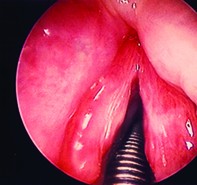Peer Reviewed
Feature Article Ear, nose and throat medicine
Hoarseness: a guide to voice disorders
Abstract
Hoarseness is usually associated with an upper respiratory tract infection or voice overuse and will resolve spontaneously. In other situations, treatment often requires collaboration between GP, ENT surgeon and speech pathologist.
Key Points
- Intermittent dysphonia is usually always secondary to a benign disorder. Constant or progressive dysphonia should always alert the GP to the possibility of malignancy.
- Radiological investigations such as CT scans miss the majority of vocal cord lesions. Flexible endoscopic nasolaryngeal examination is the most sensitive investigatory tool.
- Treatment for chronic laryngitis due to laryngopharyngeal reflux is an eight- to 12-week empirical course of a proton pump inhibitor as well as dietary and lifestyle modification.
- Muscle tension dysphonia is a common cause of hoarseness and results from excessive and unnecessary tension of laryngeal muscles during phonation. Speech therapy is the cornerstone of management.
- A patient presenting with persisting hoarseness who is at high risk of laryngeal malignancy through smoking, excessive alcohol intake or a history of head and neck cancer should be referred for early specialist assessment.
Purchase the PDF version of this article
Already a subscriber? Login here.

